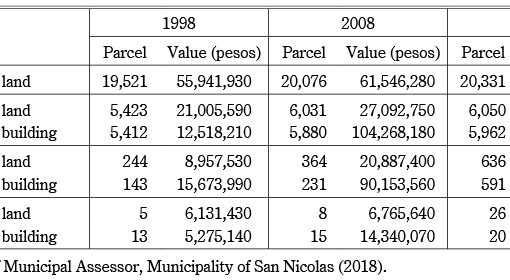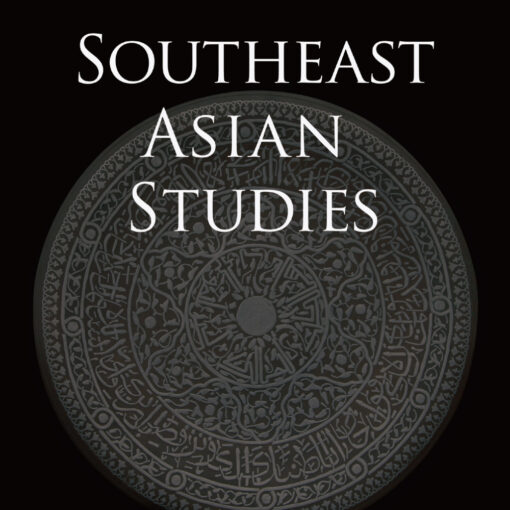Contents>> Vol. 10, No. 2
Buddhist Revitalization and Chinese Religions in Malaysia
Tan Lee Ooi
Amsterdam: Amsterdam University Press, 2020.
Buddhist Revitalization and Chinese Religions in Malaysia focuses on the background and the historical process of Buddhist revitalization in Malaysia. It analyzes the unique social, cultural, and political context inside and outside contemporary Malaysia within which the rationalization and transformation of Chinese Buddhism has occurred. The relations between Buddhism and the Chinese communities as well as tensions between Buddhism and the Chinese religion (Chinese popular religion) have also been specially reflected on in the book.
There have been several previous studies on Buddhist revitalization in Malaysia. In Sacred Tensions: Modernity and Religious Transformation in Malaysia (1997), Raymond Lee and Susan Ackerman argue that Buddhist revitalization reflects an ethno-cultural assertion of the Chinese community. In “The Religion of the Chinese in Malaysia” (2000), Tan Chee Beng challenges Lee and Ackerman’s views by emphasizing the importance of looking at the internal dynamics of Chinese Buddhism. Compared with previous studies, this book provides a broader view that includes dissecting the local and transnational factors associated with the process of Buddhist revitalization in Malaysia. It is also unique in that it pays special attention to the political responses and desires of Malaysian Buddhists.
According to the author, “Buddhist Revitalization” in Malaysia refers to the modernization movement of Buddhism that has been associated with the reformism or revivalism of the larger Buddhist world historically and contemporarily. Thus, in this book the author pays special attention to the influence of the modernization and reformism of the Mahayana Buddhism of modern China, as well as the transplantation of new ideas of reformist Buddhism from Taiwan contemporarily.
In Malaysia the Buddhist community is highly diverse, with followers of Chinese Mahayana Buddhism, Theravada Buddhism, and Tibetan Buddhism. Almost all of the followers are Chinese, but Theravada Buddhism is multiethnic as it was brought from Thailand, Myanmar, and Sri Lanka and the main medium used has been English.
The Chinese population in Malaysia is divided into Chinese-educated, English-educated, and Malay-educated according to their educational background. Followers of Mahayana Buddhism are basically Chinese-educated, which also represents the largest proportion of the Buddhist community in Malaysia. At the same time, some bilingual Chinese follow both Mahayana and Theravada Buddhism. According to the author, this book focuses on Chinese Mahayana Buddhism, which is considered the main stream of Buddhism in Malaysia. In addition, many Chinese Buddhists do not simply practice Buddhism—they also maintain traditional Chinese beliefs and ancestor worship and have an inclusive attitude toward religion. The strained relationship between Chinese reformist Buddhism and traditional Chinese religion is an important issue and is another subject of this book.
In Chapter 2 the author provides an overview of the historical development of Buddhism in Malaya while tracing and examining its transnational connection with the larger Buddhist world. Not only Mahayana Buddhism but also the historical process of the development of Theravada Buddhism and their influence on Chinese communities are described in detail. Chapter 3 portrays several initiatives of the Buddhist revitalization movement in Malaysia by focusing on two groups, the Malaysian Buddhist Association (MBA) and the Youth Buddhist Association of Malaysia (YBAM). The two nationwide organizations are the most influential Buddhist organizations in Malaysia. As a legacy from modern China, the idea of modern Buddhism was adopted by the MBA and YBAM in the 1950s and 1970s respectively. Since then the two organizations have embarked on a journey to strengthen themselves while drawing upon the principles of modern Buddhism. The YBAM is the leading Buddhist youth organization in Malaysia and represents Buddhist youths of different linguistic and ethnic backgrounds; it coordinates more than 270 member organizations all over the country. The distinctive and outstanding achievements are that it has promoted Buddhist education, developed Buddhist societies, and has had close linkages with students in major public universities, colleges, and secondary schools. It has had a great influence on the younger generation and the sustainable development of modern Buddhism in Malaysia.
Chapter 4, “New Transnational Connections with Taiwan,” discusses transnational connections which are new practices and forms of propagating Buddhism introduced from Fo Guang Shan and Tzu Chi, the two Taiwanese reformist Buddhist organizations. Subsequently Chapter 5, “Remaking Chinese Buddhists,” investigates how the Chinese reformist Buddhist groups have used religious “reformism” as a way to seek a political exit option for the Chinese community in response to ethno-political tensions and cultural crises from the 1980s. Buddhist activists, laypeople, and clerics have played a significant role in the movement of “remaking Chinese Buddhists”: they strive to protect the community’s interests through enhancing the religious and cultural strength of ethnic Chinese in Malaysia. According to the author, the “remaking Chinese Buddhist” movement—or Buddhist revitalization—was within such a political context and need. Such a perspective is new and unique. Chapters 4 and 5 appear to contain the main discussion points of this book.
Chapter 6, “Counterforces of Buddhist Revitalization,” discusses the counterforces to Buddhist revitalization in the Chinese community. The author treats traditional Chinese religion (Chinese popular religion) and Taoism as obstacles or opposite forces to Buddhist revitalization as they are considered less rational, not refined enough as modern religions in this book. Especially as traditional Chinese religion and Chinese culture are inseparable, so the author points out that it is hard for the traditional Chinese religion to change to accommodate to the ideals of rationalization of Buddhist reformists. The conflicts within the Buddhist community are investigated as well.
This study provides a comprehensive and detailed picture of the historical development as well as ongoing transformation of Buddhism in Malaysia. It also portrays the interactions among members of the Buddhist community, various Buddhist traditions, and the complicated relationship between reformist Buddhism and traditional Chinese religion. The author argues that Buddhist revitalization is a movement intended to remake and strengthen the Chinese community. In the course of the movement, transnational connections with Taiwan and the significant resources introduced are highly positive factors. These are the two main observations of this book.
In State, Society and Religious Engineering: Towards a Reformist Buddhism in Singapore (2009), Kuah-Pearce Khun Eng indicates that under the guidance of the ethnic-religious policies of the Singapore government, and upon facing competition from Christians, the home-grown Reformist Buddhists rose up and Reformist Buddhism is being established as a modern rational religion for Chinese people in Singapore. Unlike Malaysia, where the government does not interfere in the religious practices of non-Malay communities, the government of Singapore engages in “religious engineering” to ensure peace and religious harmony. Thus, in Singapore the rationalization of Buddhism is part of the response to political policies or state ideology. Like Buddhist Revitalization and Chinese Religions in Malaysia, Kuah also portrays the tension between reformist Buddhism and traditional Chinese religion (Shenism), moreover, she emphasizes the need to compete with Christians that eventually serves as a catalyst for the reformism and transformation of Buddhism.
While in this book, the main focus is on the political context of the relationships between Buddhism and the Chinese community as well as Buddhism and the state, which is quite a distinctive view. The author tries to interpret Buddhist revitalization as a political strategy and desire of certain Chinese Buddhists, which is another type of response to politics compared to the case of Singapore. Nevertheless, the religious law, state policy, and their influences on religions in Singapore are evident, but the hypothesis of this book—that ethnic tension is the reason behind Buddhist revitalization—is not persuasive enough.
In Malaysia the Buddhist community holds varied views toward political tension and crisis. Some Buddhist leaders and activists have voiced their concerns on politics and the cultural and political crises of the Chinese community in Malaysia. Some have even taken certain actions as described in this book. Nevertheless, the leading Buddhist organizations, such as the MBA and YBAM, just tend to assert the religious right and emphasize the interests of Buddhism. Such actions and assertions of the MBA and YBAM are religious rather than political, unlike the Islamic Party of Malaysia (Parti Islam Se-Malaysia), which has intertwined its religious aims with political vision. Furthermore, in Chapter 5 the author indicates that the new social engagement of certain reformist Buddhist groups has encouraged trans-ethnic solidarities, which provide an exit option for Malaysian Chinese. While some new Buddhist groups have succeeded in promoting volunteerism in a multiracial context, as the author points out, the success is limited and it is hard to see the overall impact of it on the transformation of race relations towards trans-ethnicity.
As a researcher of Theravada Buddhism in Malaysia, the modernization or rationalization of Theravada Buddhism has been my concern. It is from the late 1980s there has been a rise of newly established meditation centers and hermitages, and more and more local Malaysian Theravada monks and lay practitioners are seeking out the practice of meditation as well as profound Dhamma knowledge. Such a move represents a new aspect of the development of Theravada Buddhism in Malaysia. The pursuit of spiritual engagement of the practitioners can be viewed as a consequence of years of practice that shows the internal changes of many Theravada Buddhists. For Chinese Mahayana Buddhism, the ongoing rationalization and reformism can be viewed as being within the same context: besides the effect of external factors such as political reasons and transnationalism, the internal changes of the Buddhists are crucial as well. Unfortunately, in this book the author fails to elaborate on this point.
Lastly, I have my doubts about what the author describes traditional Chinese religion (Chinese popular religion) and Taoism as. According to this book, there appears to be a religious hierarchy in the Chinese community, where reformist Buddhism is at the top level and is the sole religious authority and interpreter of Chinese Buddhism and even the decider of what is a “real religion.” For instance, “The rationalization of Chinese religion by Reformist Buddhist groups” (p. 151) is a questionable statement; it sounds as though reformist Buddhist groups have the hegemony to correct other religions, which is somehow unacceptable.
Despite its shortcomings, this book documents the multiple dimensions of the religious revitalization of Chinese Buddhism in modern Malaysia. Its detailed and insightful examinations help in fostering a deep understanding of modernity, religion, and globalization in an ever-changing multireligious society.
Huang Yun 黄蘊
Faculty of Contemporary Culture, Shokei University
References
Kuah-Pearce Khun Eng. 2009. State, Society and Religious Engineering: Towards a Reformist Buddhism in Singapore. Singapore: Institute of Southeast Asian Studies.↩
Lee, Raymond L.M.; and Ackerman, Susan A. 1997. Sacred Tensions: Modernity and Religious Transformation in Malaysia. Columbia: University of South Carolina Press.↩
Tan Chee Beng. 2000. The Religion of the Chinese in Malaysia. In The Chinese in Malaysia, edited by Tan Chee Beng and Lee Kam Hing, pp. 282–315. New York: Oxford University Press.↩
DOI: doi.org/10.20495/seas.10.2_319




